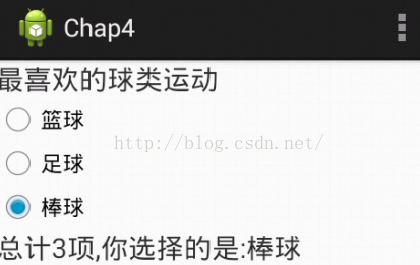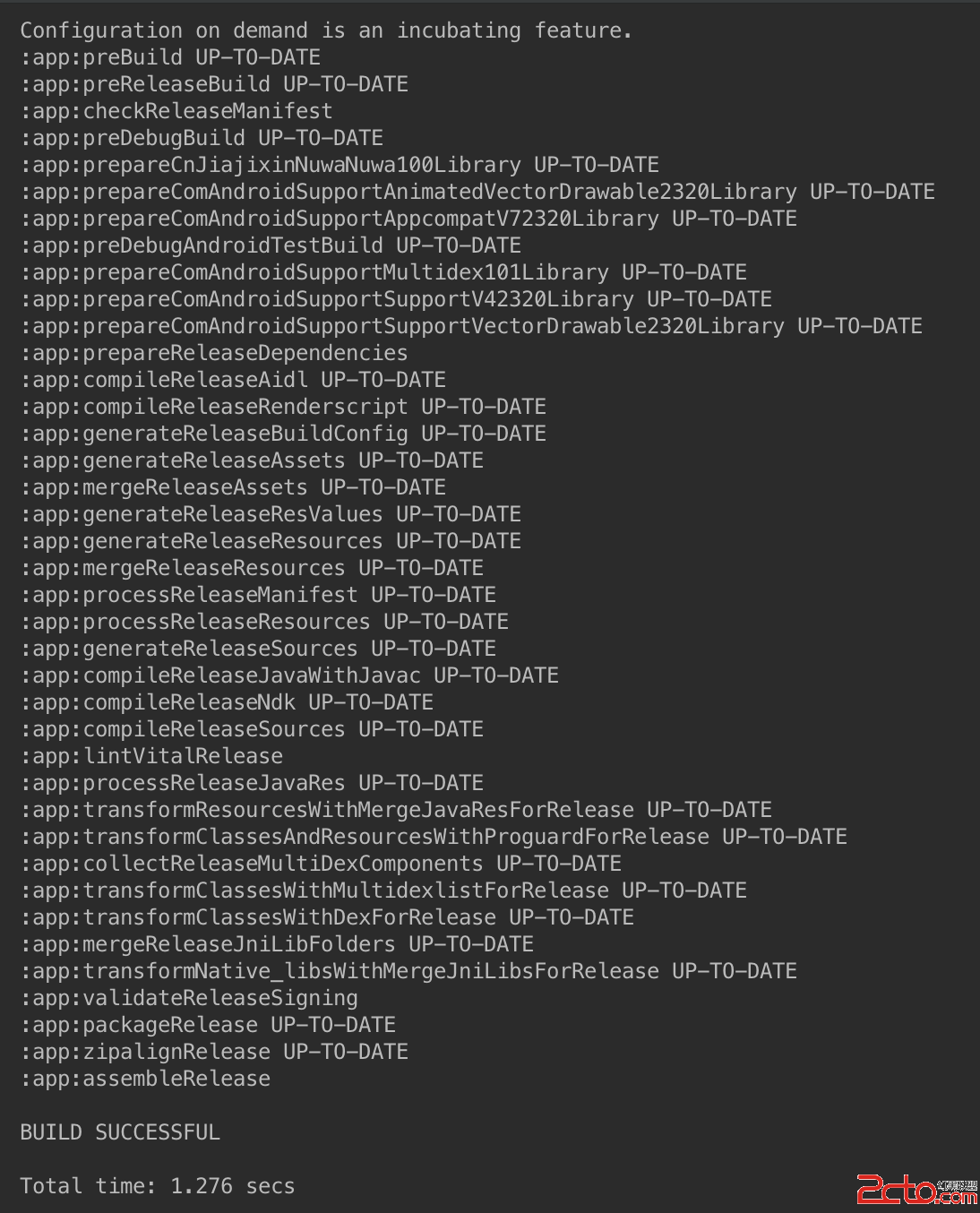編輯:關於Android編程
本文實例講述了Android編程自定義title bar(標題欄)的方法。分享給大家供大家參考,具體如下:
package com.test;
import android.app.Activity;
import android.content.Context;
import android.graphics.Canvas;
import android.graphics.Color;
import android.graphics.drawable.Drawable;
import android.os.Bundle;
import android.view.View;
import android.view.Window;
import android.view.animation.Animation;
import android.view.animation.TranslateAnimation;
import android.widget.ProgressBar;
import android.widget.TextView;
public class Test extends Activity {
/** Called when the activity is first created. */
boolean customTitleSupported;
public void onCreate(Bundle savedInstanceState) {
super.onCreate(savedInstanceState);
//check if custom title is supported BEFORE setting the content view!
customTitleSupported = requestWindowFeature(Window.FEATURE_CUSTOM_TITLE);
setContentView(R.layout.main);
//set custom titlebar
customTitleBar(getText(R.string.app_name).toString(), "hello world!!");
}
public void customTitleBar(String left, String right) {
if (right.length() > 20)
right = right.substring(0, 20);
// set up custom title
if (customTitleSupported) {
getWindow().setFeatureInt(Window.FEATURE_CUSTOM_TITLE,
R.layout.title);
TextView titleTvLeft = (TextView) findViewById(R.id.titleTvLeft);
TextView titleTvRight = (TextView) findViewById(R.id.titleTvRight);
titleTvLeft.setText(left);
titleTvRight.setText(right);
ProgressBar titleProgressBar;
titleProgressBar = (ProgressBar) findViewById(R.id.leadProgressBar);
// hide the progress bar if it is not needed
titleProgressBar.setVisibility(ProgressBar.GONE);
}
}
}
布局文件: title.xml
<?xml version="1.0" encoding="utf-8"?> <RelativeLayout android:id="@+id/RelativeLayout01" android:layout_width="fill_parent" android:layout_height="fill_parent" xmlns:android="http://schemas.android.com/apk/res/android"> <TextView android:layout_width="wrap_content" android:layout_height="wrap_content" android:id="@+id/titleTvLeft" android:text="left"></TextView> <TextView android:layout_width="wrap_content" android:layout_height="wrap_content" android:id="@+id/titleTvRight" android:text="right" android:layout_alignParentRight="true"></TextView> <ProgressBar android:id="@+id/leadProgressBar" android:layout_width="wrap_content" android:layout_height="wrap_content" android:layout_centerVertical="true" android:layout_toRightOf="@+id/titleTvLeft" android:paddingLeft="3dip"></ProgressBar> </RelativeLayout>
更多關於Android相關內容感興趣的讀者可查看本站專題:《Android視圖View技巧總結》、《Android布局layout技巧總結》、《Android開發入門與進階教程》、《Android調試技巧與常見問題解決方法匯總》、《Android多媒體操作技巧匯總(音頻,視頻,錄音等)》、《Android基本組件用法總結》及《Android控件用法總結》
希望本文所述對大家Android程序設計有所幫助。
 Android仿小米安全中心檢測進度條效果
Android仿小米安全中心檢測進度條效果
模仿小米安全中心檢測效果廢話少說,咱們先上效果圖:github地址: https://github.com/niniloveyou/GradeProgressView這個
 RecyclerView.Adapter的優化與封裝
RecyclerView.Adapter的優化與封裝
說實在的,敲代碼和看書相比較,我還是看書或是看博文看得多,到現在好久都沒練練手了,然後在簡書上面看了別人對adapter的封裝和優化,嘿,還真的挺不錯的,adapter真
 跟我學Android之五
跟我學Android之五
本章目標 掌握單選按鈕的用法 掌握復選框的用法 掌握開關按鈕的用法 掌握圖像視圖的用法。 掌握自動完成文本框的用法。單選控件——RadioButt
 Android 熱修復使用Gradle Plugin1.5改造Nuwa插件
Android 熱修復使用Gradle Plugin1.5改造Nuwa插件
隨著谷歌的Gradle插件版本的不斷升級,Gradle插件現在最新的已經到了2.1.0-beta1,對應的依賴為com.android.tools.build:gradl